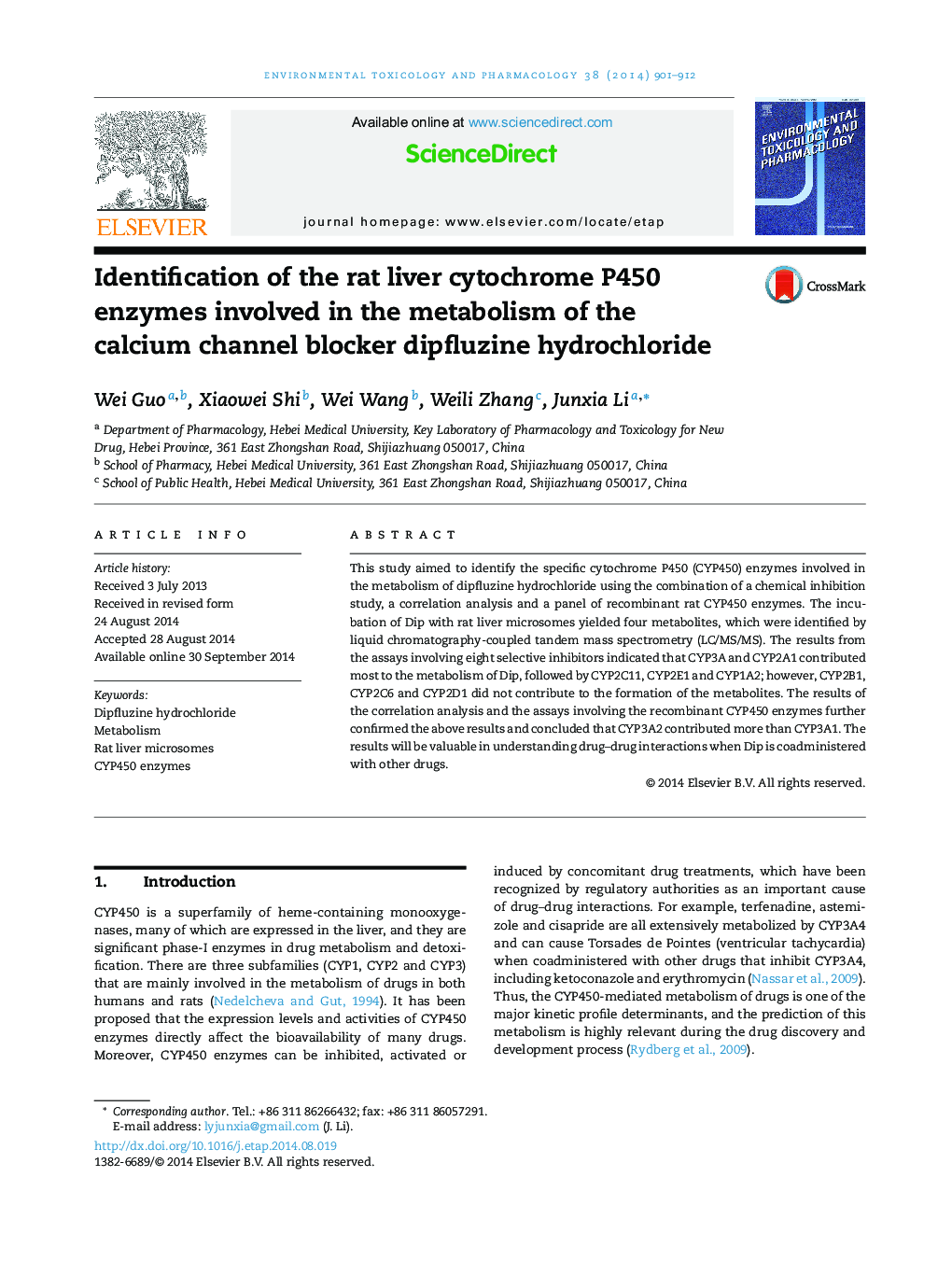| Article ID | Journal | Published Year | Pages | File Type |
|---|---|---|---|---|
| 2583411 | Environmental Toxicology and Pharmacology | 2014 | 12 Pages |
•Five analytes were assayed simultaneously by LC/MS/MS.•CYP450s involved in the formation of the four metabolites of Dip were identified.•Dip is a promising drug candidate for the treatment of cerebral vascular diseases.
This study aimed to identify the specific cytochrome P450 (CYP450) enzymes involved in the metabolism of dipfluzine hydrochloride using the combination of a chemical inhibition study, a correlation analysis and a panel of recombinant rat CYP450 enzymes. The incubation of Dip with rat liver microsomes yielded four metabolites, which were identified by liquid chromatography-coupled tandem mass spectrometry (LC/MS/MS). The results from the assays involving eight selective inhibitors indicated that CYP3A and CYP2A1 contributed most to the metabolism of Dip, followed by CYP2C11, CYP2E1 and CYP1A2; however, CYP2B1, CYP2C6 and CYP2D1 did not contribute to the formation of the metabolites. The results of the correlation analysis and the assays involving the recombinant CYP450 enzymes further confirmed the above results and concluded that CYP3A2 contributed more than CYP3A1. The results will be valuable in understanding drug–drug interactions when Dip is coadministered with other drugs.
